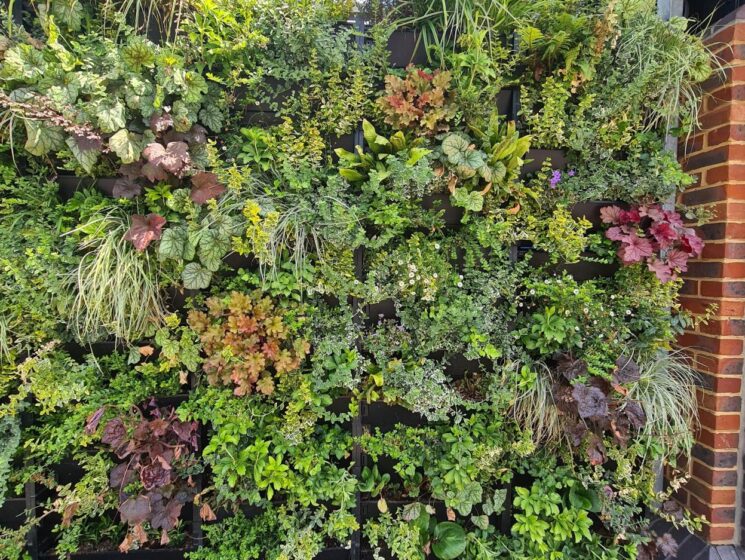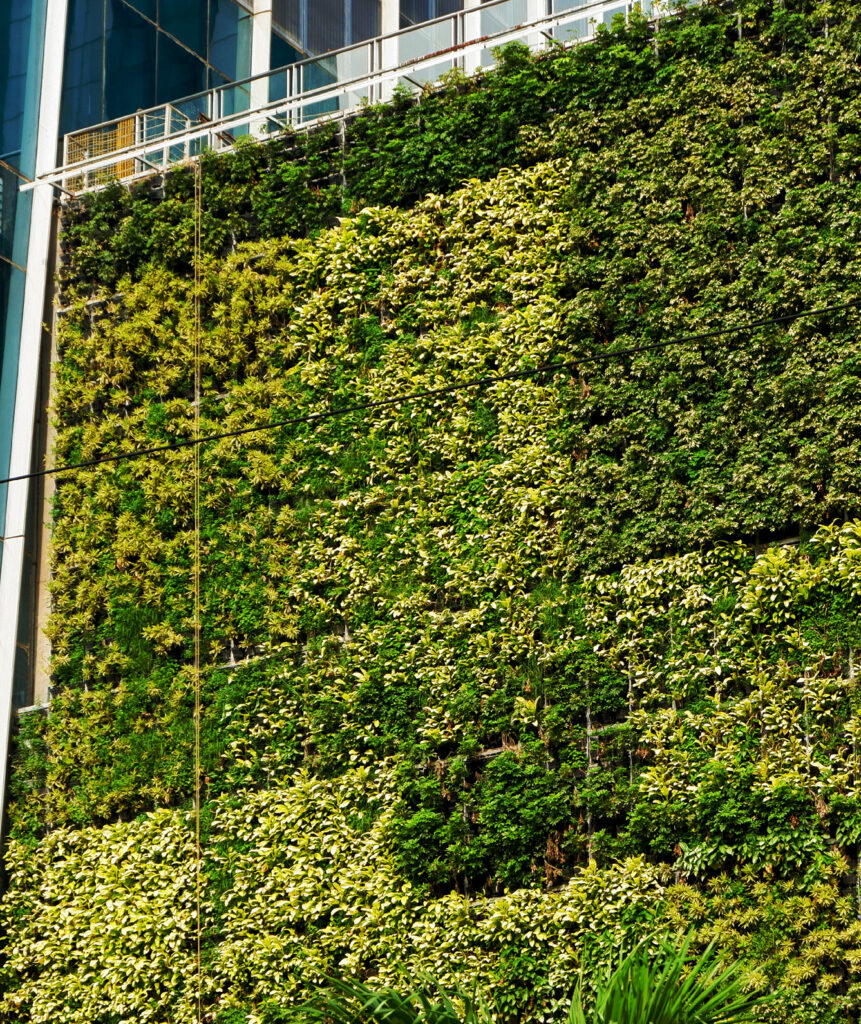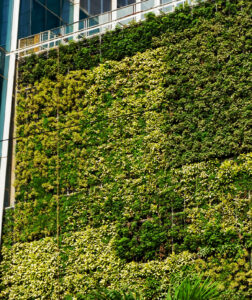The Benefits of Living Walls in the UK
Introduction:
In recent years, the UK has witnessed a growing interest in sustainable living and environmentally friendly urban development. As the need for innovative solutions to combat air pollution and enhance urban greenery becomes increasingly urgent, living walls have emerged as a prominent and practical solution. Living walls, also known as vertical gardens or green walls, are vertical structures that are covered with living plants and offer a multitude of benefits to our urban environment. In this blog post, we will explore the advantages of living walls and their potential to transform urban spaces in the UK.

Improves Air Quality:
One of the most significant benefits of living walls is their ability to enhance air quality. According to a report by the University of Birmingham, living walls have shown a remarkable capacity to capture particulate matter, reduce harmful air pollutants, and mitigate the urban heat island effect. The plants embedded in living walls act as natural air filters, absorbing carbon dioxide and releasing oxygen, thereby contributing to cleaner and fresher air in urban areas. In a time when air pollution is a major concern in many UK cities, the installation of living walls can play a vital role in combating these pressing environmental challenges.
Enhances Biodiversity:
The promotion of biodiversity in urban spaces is crucial for the overall health of our ecosystem. Research conducted by the Royal Horticultural Society emphasizes that living walls provide valuable habitat for insects, birds, and other wildlife, thereby enriching urban biodiversity. By creating pockets of natural habitat within built environments, living walls offer an opportunity to support local flora and fauna, helping to restore ecological balance in urban landscapes across the UK.
Mitigates Urban Heat Islands:
The phenomenon of urban heat islands, characterized by higher temperatures in urban areas compared to their rural surroundings, poses a serious threat to public health and energy consumption. A study published in the Journal of Urban Ecology confirms that living walls can contribute to the reduction of urban heat islands by providing shading, evaporative cooling, and insulation for buildings. By integrating living walls into urban structures, the UK can effectively combat rising temperatures and create cooler, more comfortable urban microclimates for its residents.
Improves Mental Well-being:
In addition to their environmental benefits, living walls have proven to have a positive impact on mental well-being. A study by the University of Sheffield found that exposure to green spaces, including living walls, can alleviate stress, enhance mental resilience, and promote a sense of well-being among urban dwellers. By introducing living walls into public and private spaces, the UK has the potential to create environments that not only support physical health but also nurture mental harmony in its population.
Conclusion:
The benefits of living walls are vast and varied, offering an array of advantages that are critical for the sustainable development of urban environments in the UK. As the nation strives to build greener, healthier cities, embracing the concept of living walls can be a transformative step towards achieving this goal. By harnessing the potential of living walls to improve air quality, support biodiversity, mitigate urban heat islands, and enhance mental well-being, the UK can pave the way for a more sustainable, vibrant, and liveable urban landscape for generations to come.
References:
Journal of Urban Ecology. (2018). Mitigating Urban Heat Islands with Green Infrastructure.
London Metropolitan University. (2021, August 13). The ecological benefits of green walls. London Metropolitan University. Retrieved from https://www.londonmet.ac.uk/news/articles/the-ecological-benefits-of-green-walls/.
Royal Horticultural Society. (2020). Enhancing Biodiversity in Urban Areas.
University of Birmingham. (2019). The Green Infrastructure Diary: Green Walls to Tackle Urban Air Pollution.
University of Plymouth. (2021, November 24). Living walls can reduce heat lost from buildings by over 30%, study shows. University of Plymouth. Retrieved from https://www.plymouth.ac.uk/news/living-walls-can-reduce-heat-lost-from-buildings-by-over-30-study-shows.





